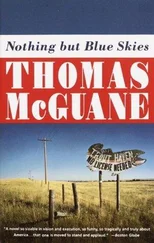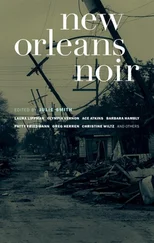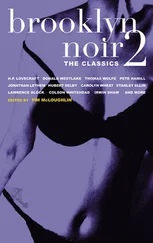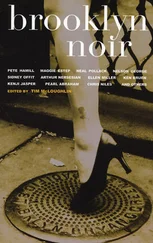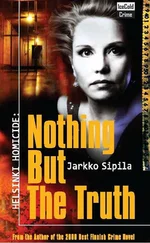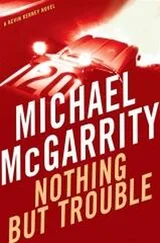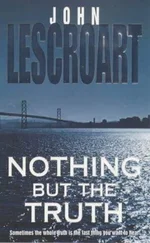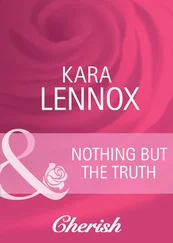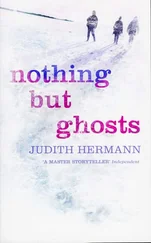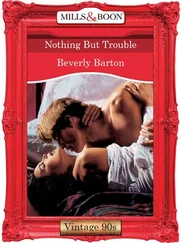Fourteen-year-old Morris, the boy who wanted a bike, was convicted of murder and sentenced as a juvenile in Brooklyn Family Court, where the sentencing standard is considerably more lenient. Additionally, Morris benefited from an oddity in state law, whereby additional leniency is granted in the event a murder is committed during a failed robbery; after all, Winslow’s mountain bike got away.
When Nisbett was taken off to prison, Marcy Winslow told a reporter that she was satisfied with the sentence, but no, she did not feel better: “My husband is dead.”
Nisbett’s court-appointed lawyer, Edward Friedman, has strong feelings about the trial after more than a decade.
“Who knows if he’s ever going to get out of jail?” said Friedman of his client. “The ringleader was a juvenile,” Friedman added, as if the trial had just ended. “My client had a bike; it was Morris who wanted a bike. Morris passes the gun to Nisbett and says, in effect, Show you’re a man .”
Friedman himself grew up in East Flatbush. He remembers being a kid walking home from summer evening concerts in Prospect Park in the late 1960s and feeling apprehensive, holding tight to his father’s hand. He has moved away from Brooklyn to a suburban town on the south shore of Long Island. So has Marcy Winslow.
Jerome Nisbett was barely literate, as evidenced by his written confession introduced at trial. At the time of the murder, he lived part-time with his mother in Bushwick and part-time with his aunt in Crown Heights. His father was a minister somewhere in the West Indies.
Attorney Howard Weiswasser, who represented Robert Brown, was asked how fourteen-year-olds like Gregory Morris acquire firearms. “Often, they literally find them on the street because someone has thrown away a gun used in a crime,” he said.
Attorney Howard Kirsch defended Morris. After trial, he said of young offenders in general, “These are the most dangerous kids in the world. They have no conscience, no control over their impulses. Their sense of morality hasn’t developed.”
Exactly how were Morris and his buddies caught?
“Like a lot of these kids, they couldn’t stop talking about it,” Kirsch explained. “They did it for street cred, to show how tough they were. If they had any brains, they’d keep it to themselves.” He added: “Once they’re caught, they sing like canaries.”
Why?
“Because they’re kids, because they’re stupid. Basically, they’re punks.”
Is there any defense against punks?
Olmsted’s biographer, Witold Rybczynski, was asked a few years ago what part of the designer’s personality we should emulate today. He responded, “It would be this sense of time, this sense of both patience and looking ahead, of saying there are certain things that take time and you have to plan for them and you just have to be patient.”
A park is a long time in the making, and is never complete. Olmsted planted many trees not much bigger than a broomstick; in placing them, he had to think years, even decades ahead. After construction and planting, Olmsted didn’t walk away. He monitored park maintenance and fretted over any modification of his plans.
The design of a garden, let alone a whole park, is not a game for those requiring instant gratification. There’s an old saw that defines gardening as the slowest of the performing arts — a philosophy that might surely have amused and pleased a drama teacher like Allyn Winslow.
Then there is Olmsted’s philosophy, which in the context of Winslow’s murder is ironic. For Olmsted once wrote:
No one who has closely observed the conduct of the people who visit the Park can doubt that it exercises a distinctly harmonizing and refining influence upon the most unfortunate and most lawless classes of the city — an influence favorable to courtesy, self-control, and temperance.
Sweet Cherry: R.I.P
by Christopher Musella
Sunset Park
Spider-Man was ready to save the girl again. Right there in front of the movie theater, the Cobble Hill Cinema. It was a warm night too; I don’t know how he does it, wearing that mask, and I have to wonder if those tights are made of that breathable fabric pro athletes wear. Behind the barricades, beyond the movie cameras and production crews, throngs of Brooklynites stood patiently in the warmth of the first night of summer, just to catch a glimpse of the actor Tobey Maguire donning the web slinger’s red and blue costume, and the damsel-cum-diva, Kirsten Dunst, waiting to be rescued. Meanwhile, in Sunset Park, not far from Cobble Hill, another piece of Brooklyn was waiting to be rescued that night.
Over on 3rd Street there was a block party. The johnny pumps were wide open. In Brooklyn, to beat back the clamoring heat of summer, we open up fire hydrants — what we call johnny pumps — and they spray out a stream of wet, cool relief, a break from the humidity and staleness called city air.
All along the riverfront — Brooklyn Heights, that is, where the famous span anchors us to lower Manhattan — families strolled along eating Grimaldi’s pizza. (Okay, fine, call it Patsy’s. The regulars have been fighting about that name for years.) And some were licking ice-cream cones. Everybody was taking in the last rays of the summer solstice, the longest day of the year. With the longest day of the year, you end up with the shortest of nights.
This was all happening on the night of June 21, 2006, in the greatest borough in the world — Brooklyn. Home to Coney Island, Di Fara Pizza (better than Grimaldi’s), Prospect Park, and, if you believe a four-year-old named Gianna Maria, it’s where they make the balloons.
But something else happened that night. Something happened in Sunset Park, a section carved out of the pavement, bordered by the million-dollar lawyers of Park Slope, Russian laborers of Bay Ridge, and the Orthodox Jews of Midwood. That night in Sunset Park, a strip club known as Sweet Cherry, a haven for Mafioso types, drug lords, and sex peddlers, was finally shuttered. The iron gates were pulled and locked for the last time, an ending that the politicians, community boards, and law enforcement agencies had fought to bring about for years.
Sweet Cherry — where dancers took their struts, drugs and money changed hands, and sex was brokered by murderous bouncers — sat in the shadows of religion and justice. Saint Michael’s Roman Catholic Church, its high arching gothic entrance, cherubs and angels smiling on the rest of Brooklyn, was just an avenue away on 42nd Street. The Department of Justice, a square chunk of weathered cement and grimy blue tile, sits on Third Avenue and 29th, stoic and silent as you pass.
And there to complete the unlikely trinity was Sweet Cherry, keeping herself open despite all efforts to lock her down. It kept its stiletto heels dug into the pavement for more than ten years, remaining a growing community concern, with smarmy lawyers taking advantage of the political process that kept the sex trade alive. Heck, even old-time politicos need to cut loose now and then.
But in June of 2006, Lady Liberty, whose torch of justice and light of freedom is visible just a few blocks from the door — right there at the pier — had had enough.
A customer named Jorge misses the place. As he says — Sweet Cherry, rest in peace.
Remorse for a strip club?
Sorrow at the loss of a stage and a pole, strands of fake blond hair soaked with sweat whipping around in time to the shimmy of real live breasts? (No money for implants in this joint.) Sorrow at the passing of a place that inspired what some wags in criminal circles might call — heh-heh! — permanent violence.
How could there be remorse for all that? As we say in Brooklyn, fuhgeddaboudit!
Читать дальше

